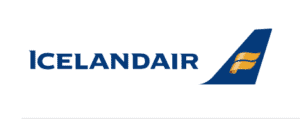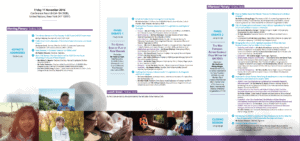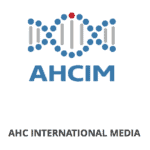The making of Human Timebombs

My name is Sigurdur Holmar Johannesson, I am father to a 10 year old girl, Sunna Valdis, who is diagnosed with Alternating Hemiplegia of Childhood (AHC).
I work as an air traffic controller and my wife works as a flight attendant. We live in Reykjavik, Iceland, and are blessed with two children, Viktor is 17 and Sunna is 10.
Viktor is a perfectly healthy young man, athletic, gets good grades and has a bright future ahead of him.
Sunna is amazingly happy but her condition is extremely debilitating. She has terrible episodes almost every day, sometimes life threatening episodes.
Our family formed the AHC Association of Iceland in 2009 and my wife and I have been raising awareness for AHC and rare disorders both domestic and internationally ever since.
Alternating Hemiplegia of Childhood, which is the most complex neurological disorder known to man, has the prevalence of 1/1.000.000.
AHC incorporates all the symptoms of all other neurological diseases and more.
AHC causes episodes of spasms, paralysis, seizures, and excruciating pain. AHC patients are also cognitively late developed and many are touched with ADHD and autism.
AHC has so many different elements and the symptoms are always changing so it is very difficult to explain to another person what goes on in our home every day.
In 2012 when Sunna was 6 years old we decided that in order to explain our situation we had to make a short film about Sunna and her condition in Icelandic and English so family, friends and doctors understood her condition and the complexity of it.
We were lucky enough to meet Agusta Fanney who was at that time studying filmmaking in California and she made the video for us
We uploaded the video´s to Youtube but expected nothing. What happened was nothing short of fantastic because we started to get messages saying that children where getting diagnosed because to the video and that other families where getting more understanding from their family and friends, all because if this video.
This positive response made us want to help more. Agusta Fanney had at this time gotten to know Sunna so now it was personal for her, she was now passionate about helping the cause and to expedite research for AHC.
I also got very interested in making films because I saw the effect it was having and realized that the phrase “a picture says more than a thousand words” was indeed very true. Finding funds to raise awareness and support research was also easier when people understood the disease.
We then made an international short video with the help of AHC families from both sides of the Atlantic. That video also got great response and helped many families all over the world.
At that time we decided to make a longer video 10-15 minutes that would explain the disease in more detail and started to work on it and to get funding for the film. The funding proved to be quite difficult but in the end it somehow came together but a lot of people either volunteered their work or gave a huge discount. When the project was rolling and we saw that the information we had would possibly be life changing to hundred or even thousands of families and we decided that we would not settle for anything less than a professional grade documentary that would be at least 35 minutes. The film´s potential also rose when internationally renowned artists like Ólafur Arnalds and Of Monsters and Men offered their music to the film. Our multitalented graphic designer Sigurgeir Arinbjarnarson also surprised us by composing two songs that were needed to escalate the feelings of emotional scenes. Iceland´s best-known actor Ólafur Darri Ólafsson volunteered to narrate a part of the film. Ólafur Darri is a personal friend of the family and has helped us immensely throughout the years.
The making of Human Timebombs was a true roller-coaster ride, a lot of sleepless nights and 2.5 years of work. By the end of filming in the US and Europe and collecting video´s from families all over the globe we had about 70 interviews and 50 hours of material to work with. To cut the film down to a 35-minute documentary that captured everything we needed to convey was many months of work and a lot of very good film ended up on the director’s floor. We realized this was a waste of precious information so we founded the AHC International Media and opened the website www.ahcim.com where everything we filmed will be open to the public and also we will continue to produce interviews that are of interest to AHC and related diseases.

Human Timebombs was finished in August 2015 but the name of the documentary arrives from the fact that AHC kids can have an episode or a seizure at any given moment without warning and are therefore sometimes referred to by some parents as ticking timebombs.
We made a 5 minute version of Human Timebombs that was sent to a short film festival hosted by the Annual Academy of Neurologist in Vancouver this year and it won the First prize and also the Fan Favorite prize. Agusta Fanney also received an award for Human Timebombs at the Accolade Global Film Competition last year in the category of woman filmmakers.

The film was first aired in public television in June this year by the Icelandic National Broadcasting Service and will be available in Icelandair´s onboard entertainment system from November 1st. Human Timebombs has been translated to10 languages so far.

Human Timebombs has been distributed as a teaching tool to many hospitals in Europe and the US. Hospitals such as Duke University hospital, Vanderbilt, University hospital of Utah, Northwestern, Nemours Children hospital in Orlando, Massachusetts General Hospital and more. We intend to continue to distribute the film to teaching hospitals, if you are interested in receiving a copy for your hospital please contact ahc@ahc.is

AHC is still not known by majority of neurologists in the world and only a very small percentage if the general public is familiar with rare diseases in general and only a fraction of them know AHC so it´s fair to say that the disease needs a voice and we hope that Human Timebombs will be that voice. We would also like to help researchers and the public to realize that by finding a treatment for AHC we could very possibly find a treatment for other much more common diseases and help millions of people all over the world improve their quality of life.
If you would like to donate or to help the cause please contact your nearest AHC association www.ahcia.org
The article from Rare Disease Report
Links:
https://www.youtube.com/watch?v=aMzG0IDKRyg
https://www.youtube.com/watch?v=FxCryStG2n0
https://www.youtube.com/watch?v=se6i5tD4uow
https://www.youtube.com/watch?v=jmdgsfddZKA
http://www.raredr.com/news/the-making-of-human-timebombs





















